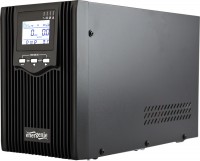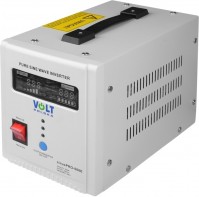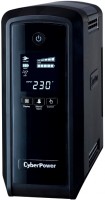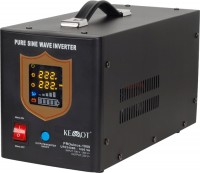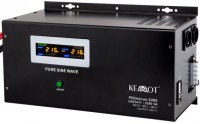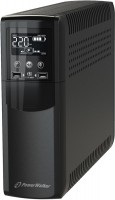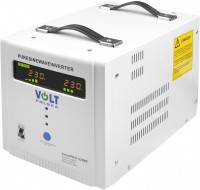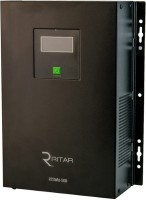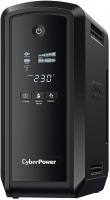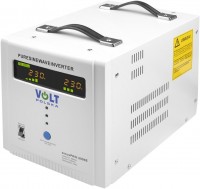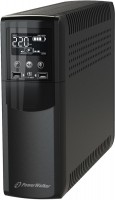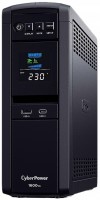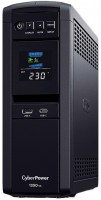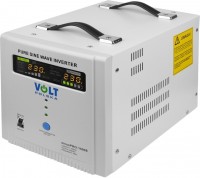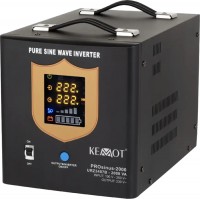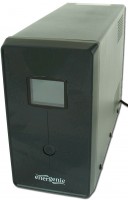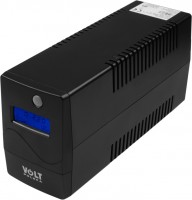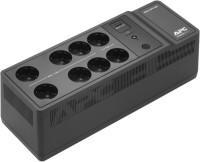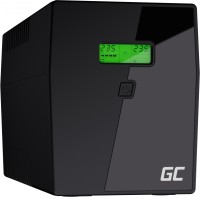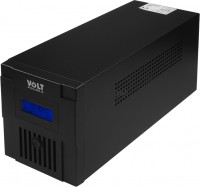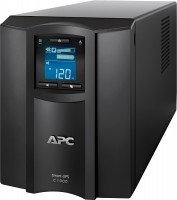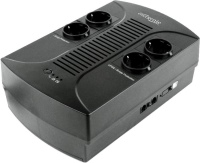Best Pure Sine Wave UPS for Boiler
Niezależnie testujemy rekomendowane przez nas produkty i technologie.

The characteristics of the models from the review can be found in the comparative table of interactive UPS with pure sine wave output voltage. The entire range of "uninterruptible power supplies" is presented in the UPS section. And "How to choose a UPS" is described in the article of the same name.

2E 2E-PS500L is a fairly advanced line-interactive UPS with a network voltage stabilization function and an output signal in the form of a smooth sine wave.
The model is supplied without a built-in battery, instead of which an external 12 V battery is used. The user must purchase a battery separately for the expected backup time of the connected load. The output connectors on board the "UPS" are represented by two Schuko sockets, one C13/C14 socket and a LAN interface - the UPS can be used to protect the data transmission line.
The device is designed to work with loads with a total power of up to 300 W. The UPS handles peak power surges at a level of up to 500 W. The settings here include the selection of the output voltage (220/230/240 V) and fine adjustment of the charging current for the battery (from 1 to 10 A). All of these parameters can be monitored using the data on the info screen. The display also displays error codes when failures occur.
In the additional section of the "UPS" there are USB and RJ45 switching interfaces, which are used to control the operation of the device. And the device also provides the ability to "cold start" - turning on equipment connected to the UPS when there is no voltage in the network. The 2E 2E-PS500L is upset only by its large dimensions of 215x144x345 mm and solid weight (about 7 kg). However, this is not the category of equipment that needs to be constantly moved from place to place. So you can safely close your eyes to this nuance.

A significant share of profit for the Polish company Volt Polska comes from uninterruptible power supplies. One of them is the balanced interactive model Sinus PRO 500E.
The device is designed for use with 12 V batteries. The UPS is supplied without its own battery. The "uninterruptible power supply" is used to stabilize the network voltage, and if there is no current in the socket, it automatically switches the load to power from the battery (in about 4 ms). At the output of the Volt Polska Sinus PRO 500E, you can get a voltage of 230 V with a frequency of 50 Hz.
An important characteristic of the model is the output signal in the form of a smooth sine wave. It ensures proper operation of power tools, refrigerators, air conditioners, central heating systems. In general, any load that places high demands on voltage quality. To control the input and output parameters, the UPS is equipped with an info screen. It also displays indicators of malfunctions in the operation of the "uninterruptible power supply".
In long-term operation mode, the device handles a total load of up to 300 W, in the short term, it can withstand power surges of up to 500 W. Two sockets for connecting consumers are located on the rear panel of the UPS case. There you can also see the fan of the cooling system of the "insides" (and quite noisy). In addition, the model is equipped with a handle for easy carrying of the 3.9-kilogram case.
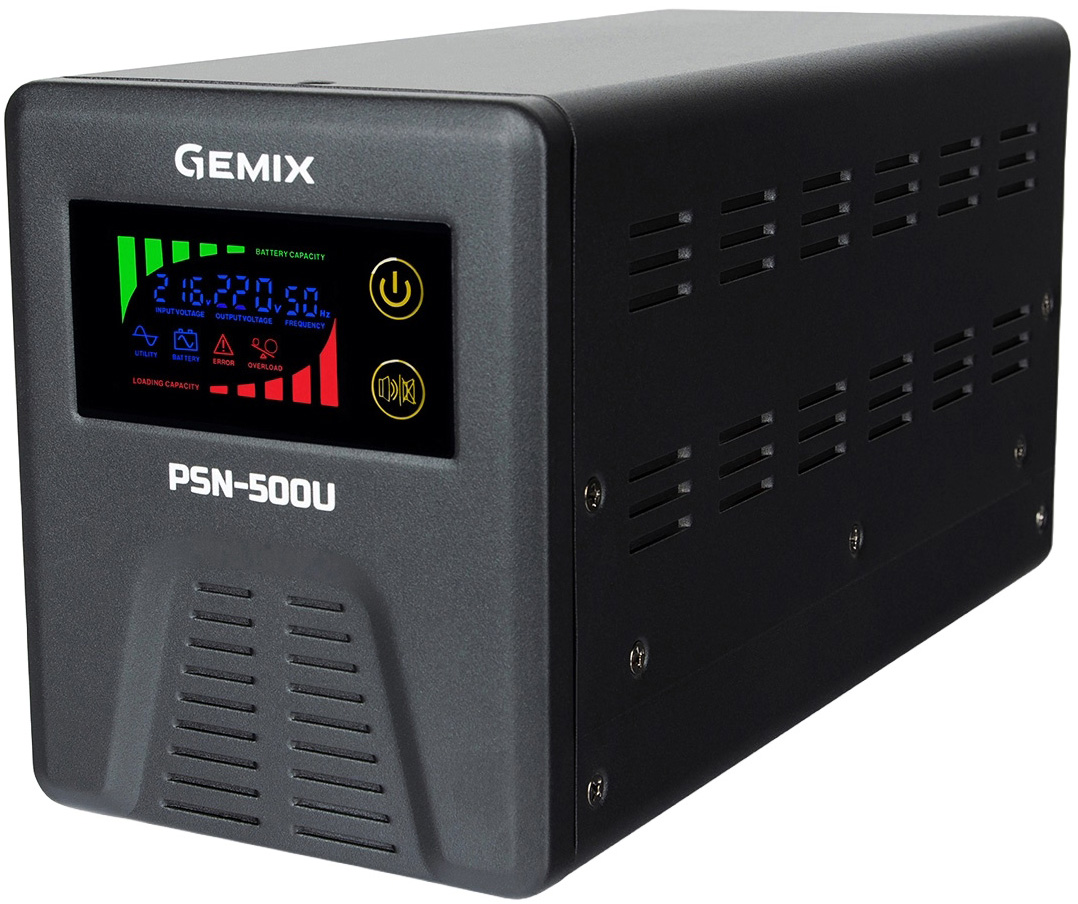
The Gemix PSN-500U desktop UPS in a Tower form factor case provides pure sine wave voltage, which is needed by delicate loads: boiler equipment, circulation pumps, video surveillance systems, and various computer equipment.
The model will not handle everything from the above list - after all, it is designed to operate with a nominal power of up to 350 W. As a last resort, the UPS can withstand peak power of up to 500 W, but only for starting pulse loads. It is assumed that equipment will be connected to the "uninterruptible power supply" through one of two sockets of type F (Schuko).
The second role of the device is to work as a stabilizer of the network voltage. The UPS belongs to the segment of linear-interactive models and is capable of stabilizing the voltage in the range from 140 to 275 V. Outside these limits, the load power is switched to the battery of the "uninterruptible power supply", as well as during power outages. In terms of time, automatic backup takes about 4 ms.
The battery for the model will need to be purchased separately. "How to choose a battery for a UPS" is described in detail in the article of the same name. Here we note that the Gemix PSN-500U is designed to work with 12-volt batteries with a capacity of 50 to 200 Ah and has a slider on the rear panel of the case for switching the charging current (5 A / 7 A / 9 A). The front of the "uninterruptible power supply" is equipped with a detailed info screen. The model can also boast a reliable electrical protection system.

The Logicpower LPY-W-PSW-500VA Plus model will serve for automatic backup of the connected load with a total power of up to 350 W, at the same time it performs the function of a network voltage stabilizer.
The device is made in a case with dimensions of 255x220x155 mm, which can be hung on a wall or installed on any flat horizontal surfaces. The model smooths out voltage drops in the network in the range of 140 - 275 V, and when the "voltage" goes beyond these limits, the power supply of the connected equipment automatically switches to the UPS battery. This prevents problems with equipment failure.
The response time of the "uninterruptible power supply" in case of power outages of the centralized power supply is about 4 ms. As already mentioned, the model pulls a load with a total power of up to 350 W, and when connecting equipment with increased starting currents, the UPS withstands short-term power surges at a level of up to 600 W. Moreover, Logicpower LPY-W-PSW-500VA Plus supports the "cold start" function - starting the connected equipment in the absence of voltage in the power grid.
The UPS is supplied without a battery. It is supposed to be used with any 12-volt batteries: gel, AGM, lithium-iron-phosphate. To replenish energy reserves in their cells, an option for adjusting the charging current (from 5 to 10 A) is provided. The operating parameters of the UPS are displayed on the information display. As for the number of on-board sockets, there is a single Schuko socket with a correct sinusoidal shape of the output signal - a key parameter for the correct power supply of delicate loads (such as control equipment of a heating boiler, various audio and video equipment, video surveillance systems, etc.).
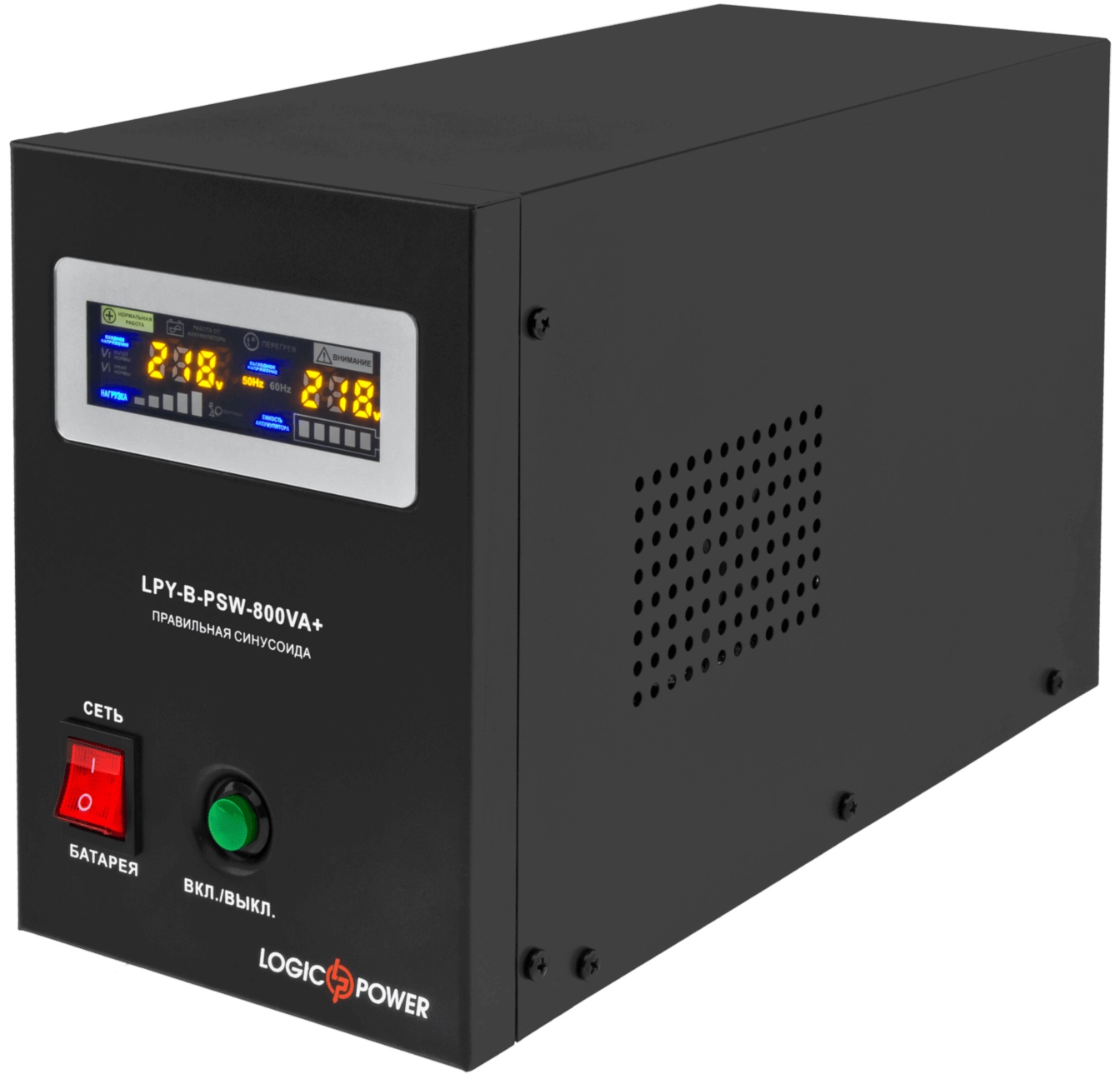
The Logicpower LPY-B-PSW-800VA Plus UPS with correct sinusoidal voltage can autonomously power a variety of telecommunications equipment, heating boilers and circulation pumps, and other delicate equipment with increased requirements for the signal shape.
The "Bespereboynik" is available in modifications from 500 VA to 1500 VA. In this version , the UPS is capable of providing constant power to connected equipment with a power of up to 560 W and "pulling" pulse power surges of up to 800 W. The model has two Schuko sockets for 230 with grounding contacts. As for the accuracy of the output signal, the UPS produces a sine wave with slight distortions - deviations are allowed in the range of up to 10%. At the same time, the model stabilizes the network voltage within the range of 140 to 275 V.
In addition to the device, you will need to acquire a battery - the UPS is not equipped with one. It is best to use a lithium-iron-phosphate battery with a capacity of 50 to 150 Ah. However, it is quite acceptable to use 12-volt batteries of other types and higher energy capacity. The connected battery is charged with a current of 5 to 15 A.
Logicpower LPY-B-PSW-800VA Plus can be placed on flat horizontal surfaces or hung on the wall. In addition , the model is equipped with a detailed info screen, has functions for selecting power priority (manual bypass) and "cold start" (for powering de-energized equipment). The cherry on the cake is a multi-level security system, which includes protection against short circuits, overloads, battery overcharging and filtering interference in the electrical network.
Artykuły, recenzje, przydatne porady
Wszystkie materiały








